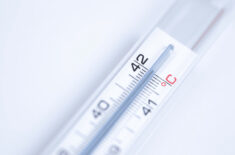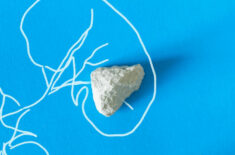Overview
Chronically high blood pressure (hypertension) is a common problem in the modern world. According to the American Heart Association, almost half of all adults in the United States have high blood pressure (hypertension). (1)
This is a concern because if left untreated, hypertension can lead to other adverse effects and conditions like:
- Increased risk of heart attack and stroke
- Heart disease
- Damage to blood vessels and arteries
- Brain damage
- Kidney disease
- Vision loss
- Reduced libido
- Palpitations
Luckily there are interventions and lifestyle changes you can implement to lower blood pressure and keep it at safe levels.
Many of these habits involve increasing relaxation and decreasing stress and anxiety, which can elevate blood pressure.
Some of these habits include stress management, meditation, quality sleep, breathing exercises, aromatherapy, and adopting a diet that supports heart health.
What is blood pressure?
Blood pressure (BP) is the pressure of blood contained in your artery walls.
It’s a sign of how well your body is functioning and also cardiovascular health.
BP is also one of the four significant vital signs of the body:
1 – Blood pressure
2 – Heart rate
3 – Breathing rate
4 – Body temperature
What is a normal BP range?
There are two parameters used to measure BP:
1 – Systolic blood pressure – measures the pressure in arteries while the heart is beating
2 – Diastolic blood pressure – measures the pressure in arteries in between heartbeats.
According to the American College of Cardiology/American Heart Association Guideline for the Prevention, Detection, Evaluation, and Management of High Blood Pressure the ranges are as follows: (2)
Normal BP range is under 120/80 (systolic: <120, diastolic: <80)
Elevated BP range is 120–129/<80
High BP (hypertension) range is anything higher than 130/80
Essential Oils As A Natural Remedy
Essential oils (EOs) are highly concentrated plant extracts containing active chemicals that offer multiple health benefits that support healthy blood pressure levels:
- Boosting immunity
- Decreasing stress and anxiety
- Improving sleep
- Supporting weight loss
- Relieving pain and discomfort
Aromatherapy is a natural health and alternative medicine modality that involves using essential oils for therapeutic and medicinal purposes.
Certain essential oils contain anti-inflammatory properties that counteract the effects of stress on the body and nervous system.
Studies suggest that oils like lavender, bergamot, lemon, roman chamomile, sandalwood, and clary sage offer calming effects on the nervous system and help lower stress hormones cortisol levels. (2)
You can mix EOs to create custom oil blends, and this can amplify their healing effects.
Add essential oils to carrier oils like coconut oil to create massage oils and lotions.
What The Science Says About EOs & Blood Pressure
Some studies indicate that essential oils might help manage high blood pressure effectively, though more research is needed for a definitive conclusion.
While EOs may help support healthy blood pressure levels, they should not be used as a stand-alone treatment or cure-all.
EOs are most effective when used as part of a multi-faceted healing protocol.
Always consult with your doctor before using EOs for hypertension.
Here are some studies suggesting the use of EOs may help with blood pressure:
- A 2012 study published in Evidence-Based & Complementary Medicine found that essential oil inhalation of a blend containing lavender, ylang-ylang, marjoram, and neroli had immediate and continuous effects on blood pressure and reducing the stress response. Researchers noted a decrease in salivary cortisol levels in the EO group versus the placebo group. The study concluded that the relaxing effects of these oils might help control hypertension. (3)
- A 2006 randomized clinical trial asked essential hypertension patients to inhale an aromatherapy blend of lavender, ylang-ylang, and bergamot once a day for four weeks. The study concluded that the aromatherapy led to reduced stress responses, lower serum cortisol levels, and lower blood pressure subjects. (4)
- A 2013 randomized controlled trial published in the Journal of Alternative & Complementary Medicine found that inhalation of clary sage oil led to a significant decrease in systolic blood pressure compared to the control group. (5)
The Best Essential Oils for Hypertension
Sweet marjoram essential oil – A 2017 study published in PLoS One found remarkable heart rate changes and blood pressure after inhaling marjoram. (6)
Clary sage essential oil – May help lower systolic blood pressure.
Ylang ylang essential oil – May help induce a calmative state while lowering stress and cortisol levels in hypertension patients.
Bergamot essential oil – Like Ylang-ylang, Bergamot may help to keep you calm while lowering blood pressure. It may also help lower heart rate.
Lavender essential oil – Lavender is an anxiolytic, which means it tends to calm down the nervous system to reduce anxiety and stress, which is a great way to keep BP low.
Neroli essential oil – Has calming effects that can help lower BP.
Other oils that might also help:
- Frankincense
- Valerian
- Peppermint
- Hyssop
Safety Concerns
When used safely and mindfully, essential oils typically offer little to no adverse side effects.
As mentioned, always consult with your doctor before using any essential oil for blood pressure.
Even though EOs are potent and effective, they are not cure-alls and should not be used as the sole treatment for hypertension.
The FDA (Food and Drug Administration) doesn’t regulate EOs, so it’s vital to choose only certified organic, high-quality, and therapeutic grade oils.
Certain essential oils aren’t suitable for babies, young children, pregnant women, or hypertensive or epileptic people.
Make sure you know the contraindications for each oil you use.
If you’re applying, EOs topically always dilute them in a carrier oil like coconut oil.
This will help reduce the risk of skin irritation or adverse reactions.
How To Use EOs for High Blood Pressure
You can use EOs two ways – topically or via inhalation.
Dilute your EOs in a carrier oil like coconut oil or almond oil before applying directly to your skin.
Stick to 2-3 drops of EO per 1 teaspoon of carrier oil.
Create a blend of lavender oil with ylang-ylang, bergamot, clary sage, and marjoram to amplify their healing and balancing effects and use them as a massage oil.
You can try the ancient Ayurvedic practice of Abhyanga (self-massage) for an added soothing effect.
You can also use a diffuser and add 12-15 drops of essential oil per 200 ml of water.
Or you can add 20-30 drops of oil to the cotton wick of an inhaler for portable aromatherapy anytime.
Note:
Hypertension is one of the risk factors for coronavirus COVID-19 complications.
It’s important to keep your BP and health in check during this time.
Consult with your doctor about your options.
REFERENCES
:
(1) https://www.heart.org/en/news/2018/05/01/more-than-100-million-americans-have-high-blood-pressure-aha-says
(2) https://pubmed.ncbi.nlm.nih.gov/19831048/
(3) https://www.ncbi.nlm.nih.gov/pmc/articles/PMC3521421/
(4) https://pubmed.ncbi.nlm.nih.gov/17211115/
(5) https://www.ncbi.nlm.nih.gov/pmc/articles/PMC3700459/
(6) https://www.ncbi.nlm.nih.gov/pmc/articles/PMC5336204/












